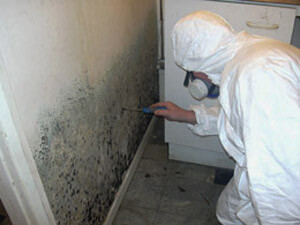Mold Remediation Testing San Francisco
If you have had a problem with flooding in your house, unfortunately the work does not end with merely getting all the water out and drying the home. A more insidious hazard may arise even after the flooding cleanup: mold. Flooding creates the ideal conditions for mold to take hold and grow: moisture and, in improperly ventilated areas, humidity. There are hundreds of different types of fungus, and some are highly toxic to humans. These dangerous molds produce spores that, if inhaled or ingested, can cause serious respiratory problems and allergic reactions.
 If you see mold growing in your home, and it is too large an area to clean yourself, you should call in a mold inspection specialist In San Francisco (known as a remediator). If you can smell a musty odor but can’t see any mold, there may be hidden mold growing inside pipes or ducts, behind the drywall or wallpaper, underneath carpeting or wooden floors, or in roofing materials above the ceiling tiles. All types of mold must be removed, due to the possible danger to your health and the damage it will wreak on the home.
If you see mold growing in your home, and it is too large an area to clean yourself, you should call in a mold inspection specialist In San Francisco (known as a remediator). If you can smell a musty odor but can’t see any mold, there may be hidden mold growing inside pipes or ducts, behind the drywall or wallpaper, underneath carpeting or wooden floors, or in roofing materials above the ceiling tiles. All types of mold must be removed, due to the possible danger to your health and the damage it will wreak on the home.
Where to Begin
The first step is to have a qualified mold inspector examine your home and test the mold. The inspector will take swab or lift tape samples of the mold and send them to a lab, and also test for airborne particles using the laser test. Once they get the lab results, they can recommend remediation treatments and possible repairs to the home to prevent the mold from growing back.
The remediatiors will check for water damage and leaks around your home. They should have a thorough knowledge of how to inspect buildings, including plumbing, roofing, waterproofing, and structural problems. A good remediator will also be an expert on temperature and humidity and how these interact to encourage mold growth. A deep understanding of HVAC systems is necessary as well, since many mold problems are caused by leaks or other problems with the heating, ventilation and air conditioning system. Hidden mold can lurk in contaminated blower fans, coils, and return and supply plenums.
Get a Report
Make sure that when you get the lab report, it includes a detailed report of visual inspection, interpretation of lab results, results of environmental and air testing, complete recommendations and possibly even digital photos. This may be very important for insurance purposes or to show to a doctor if you have symptoms of toxic mold allergies.
